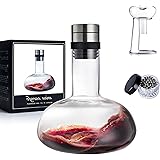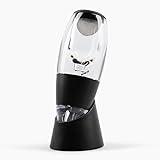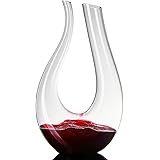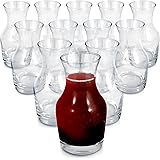Crafting Your First Batch: The Ultimate Guide to Beginner Mead and Wine Making Kits
Embarking on a new hobby is often exciting. Perhaps you recall that initial rush, thinking about all the possibilities. Then the reality hits. The sheer amount of gear, jargon, and conflicting advice can feel overwhelming. Homebrewing, especially mead and wine making, is no different. Many hopeful brewers find themselves lost.
Fortunately, getting started can be simple. This article expands on the video above. It dives into beginner brewing kits. We explore what makes them good. We also discuss what to avoid. Our focus is on fruit wine and mead making kits. This guide helps you navigate your first steps.
The Homebrewer’s Dilemma: Kits vs. A La Carte Gear
Experienced brewers often discourage kits. They suggest buying individual pieces. This approach saves money. It also ensures you get quality items. However, new brewers face different needs. A beginner needs convenience. They need a simple starting point. Online sourcing for individual items can be complex. Local homebrew shops are also rare for many. Kits offer a streamlined entry. They remove much of the initial guesswork. Some kits are quite good. They provide a solid foundation. Let us look at what makes a kit worthwhile.
10 Things to Consider for Your First Homebrewing Kit
Finding a good wine making kit or mead making kit is key. These points help guide your choice.
-
Expert Opinion Varies
Experienced brewers often criticize beginner kits. Their needs differ greatly. Kits serve as learning tools. They are not meant for advanced production. A new brewer benefits from a kit’s simplicity.
-
Sellers Prioritize Profit
Kits are generally more expensive. Buying components individually saves money. This is a business reality. Convenience has a price tag. Online purchases also add costs.
-
No Kit is Flawless
Expect to buy additional items. Few kits are truly complete. This is important to remember. Plan for small extra purchases. Your ideal setup will grow.
-
Beware of Low-Quality Kits
Some kits are genuinely poor. They include subpar equipment. These kits frustrate new brewers. Knowing what to avoid is crucial. Research prevents bad purchases.
-
Many are Just Dabbling
Most people try homebrewing once or twice. They may not stick with it. A smaller, less expensive kit is perfect for this. It allows for experimentation. It also limits financial commitment.
-
Small Batches vs. Economy
One-gallon batches feel more economical. This is often an illusion. Larger batches, like five gallons, are more efficient. However, starting small is fine. Brewing anything is better than not brewing.
-
Instruction Manuals are Often Useless
Kit instructions are frequently poor. They often contain bad recipes. Discard them immediately. Seek out reliable online resources. Channels like “Doin’ the Most” offer great recipes.
-
Immediate Expertise is Not Needed
Do not feel pressured to know everything. Learning happens over time. Brewing a little blindly is okay. It helps in understanding the process. Enjoy the journey of discovery.
-
Certain Essentials Are Non-Negotiable
Every kit needs core items. A carboy is essential. Stoppers and airlocks are vital. A siphon is used for transfers. Yeast and nutrients are critical. Sanitizer and a hydrometer are also absolute musts.
-
Good Kits Enable Growth
The best kits are expandable. They provide a solid foundation. You can add more tools later. An excellent beginner setup can be had for around $100. It prepares you for more advanced brewing.
Essential Gear for Successful Homebrewing
To really get started right, certain pieces of equipment are paramount. Many beginner homebrewing kits fall short. They omit key tools. These tools ensure both safety and quality. A basic kit often includes: a carboy, stopper, airlock, siphon, yeast, yeast nutrient, sanitizer/cleaner, acids, stabilizers, and an instruction booklet. However, some of these are less critical or easily replaced. More important pieces are listed below.
For a reliable start, your beginner kit must have:
- Carboy: This is your primary fermentation vessel. Glass or plastic options exist.
- Stopper and Airlock: These seal the carboy. They allow CO2 to escape. They prevent outside air from entering. This protects your fermenting liquid.
- Siphon: An auto siphon is highly recommended. It makes transferring liquid easy. It minimizes oxygen exposure. This is crucial for flavor stability. A standard racking cane can be used but is harder for beginners.
- Yeast and Yeast Nutrient: Yeast drives fermentation. Nutrients support healthy yeast activity. FermAid O is often preferred for beginners. It is forgiving and effective.
- Sanitizer/Cleaner: Proper sanitation is non-negotiable. It prevents off-flavors. It stops spoilage. Starsan is a highly effective sanitizer. It has a good shelf life.
- Hydrometer: This tool measures sugar content. It tracks fermentation progress. It is absolutely essential for quality control. Hydrometers typically cost $8-$10. Its absence in a kit is a major drawback.
The most comprehensive kits go even further. They might include:
- Two-Gallon Bucket with Lid: This provides a secondary fermentation vessel. It offers more flexibility.
- Acids and Tannin Powder: These balance flavors. They improve mouthfeel. They are important for complex meads and wines. Citric, malic, and tartaric acids are often preferred.
- Bottling Wand: This speeds up bottling. It reduces oxidation risks.
- Funnel: A simple tool, but very helpful. It minimizes spills.
- Fruit Bag: This contains fruit during fermentation. It makes removal much easier.
An ideal starter setup typically costs around $100. A more advanced beginner kit might be around $140. These costs are a barrier to entry. However, they ensure better results. Investing in good tools pays off. You will produce better meads and wines. They are also tools you will use long-term.
Dissecting Popular Beginner Kits: A Detailed Review
Finding the right homebrewing kits can be tough. Many options exist. Some are better than others. The video reviewed several popular choices. Here is a closer look at each, with additional insights.
1. Home Brew Ohio Mead Making Kit
- Price: $59.99
- Video Grade: B+
- Pros: This kit is well-regarded. It includes a hydrometer. An auto siphon is also present. Nutrients, acids, tannin, and yeasts are provided. A two-gallon bucket is included. This kit offers good value. It is effective for a beginner.
- Cons: The included recipes are often poor. They should be ignored. The one-step sanitizer is less preferred. Starsan offers better performance. Yeast variety is somewhat limited.
- Improvement Notes: A funnel should be added. Swapping the sanitizer for Starsan is recommended. Consider acquiring additional yeast strains. This allows for diverse meads.
2. Craft A Brew Mead Kit
- Price: $49.00
- Video Grade: B-
- Pros: This kit is quite affordable. It is a decent entry point. The basic brewing components are present.
- Cons: It lacks an auto siphon. Only a standard racking cane is included. This makes siphoning harder for beginners. A hydrometer is not included. This is a significant omission. The powdered sanitizer is functional but less favored. Its shelf life after mixing is short. The fruit wine kit from Craft A Brew is $70. It offers better components. It includes a bucket and carboy. A fruit bag is also part of it. The instruction booklet is very helpful.
- Improvement Notes: An auto siphon is a necessary upgrade. A hydrometer must be purchased separately. This brings the total cost closer to other kits.
3. MoreWine’s Wine Making Kit
- Price: $59.99
- Video Grade: A
- Pros: This kit is truly impressive. It includes Starsan, the preferred sanitizer. Both a carboy and a bucket are provided. An auto siphon is also included. A hydrometer and hydrometer jar are present. This comprehensive assortment is great. It is considered the top pick.
- Cons: Only acid blend is included for balance. Individual acids (citric, malic, tartaric) are generally better. A bottling wand is not part of the kit. The recipe handbooks may be outdated. They might contain unverified recipes.
- Improvement Notes: Adding FermAid O is a good idea. Consider purchasing a bottling wand. Verify recipes with online communities. Homebrewing groups on Discord or Facebook are helpful.
4. Golden Hive Mead Making Kit
- Price: $90.00
- Video Grade: Criminal (Overpriced)
- Pros: It includes a hydrometer. An auto siphon is also present. Tartaric and malic acids are included. This offers some balancing flexibility.
- Cons: This kit is severely overpriced. Its components seem resold from other suppliers. Only one wide-mouth vessel is included. This makes secondary fermentation impossible. The recipe book is considered extremely poor. It lacks basic stabilizers like sorbate. Sanitizer, tannin, and a bottling wand are missing. Only one yeast packet is provided. This kit offers very little value for its high cost. It is estimated to be 100% overpriced.
- Improvement Notes: This kit is not recommended. Its purchase is strongly advised against. Better value can be found elsewhere.
Elevating Your Homebrewing Journey
The journey into homebrewing, particularly mead making kits and wine making kits, is rewarding. A good beginner kit serves as a launchpad. It allows you to gain experience. It helps you understand the process. The initial investment in quality gear ensures a better experience. It also encourages continued learning. Remember, an ideal starter setup costs around $100. A more comprehensive kit, offering even more versatility, is typically around $140. These costs reflect the necessary tools for success. They empower you to experiment confidently.
As you progress, consider expanding your knowledge. Explore different yeast strains. Experiment with various honey varietals. Learn about fruit additions. Resources like online forums and communities are invaluable. They offer support and advice. Many experienced brewers share their wisdom. They help new brewers avoid common pitfalls. The homebrewing community is generally very welcoming. Joining one enhances your learning curve.
Ultimately, the best approach for beginner brewing kits involves careful selection. Choose a kit that provides essential tools. Ensure it allows for future upgrades. Do not hesitate to supplement your kit. Adding a few extra items makes a huge difference. This proactive approach sets you up for delicious results. It fosters a lasting passion for mead and wine making.







